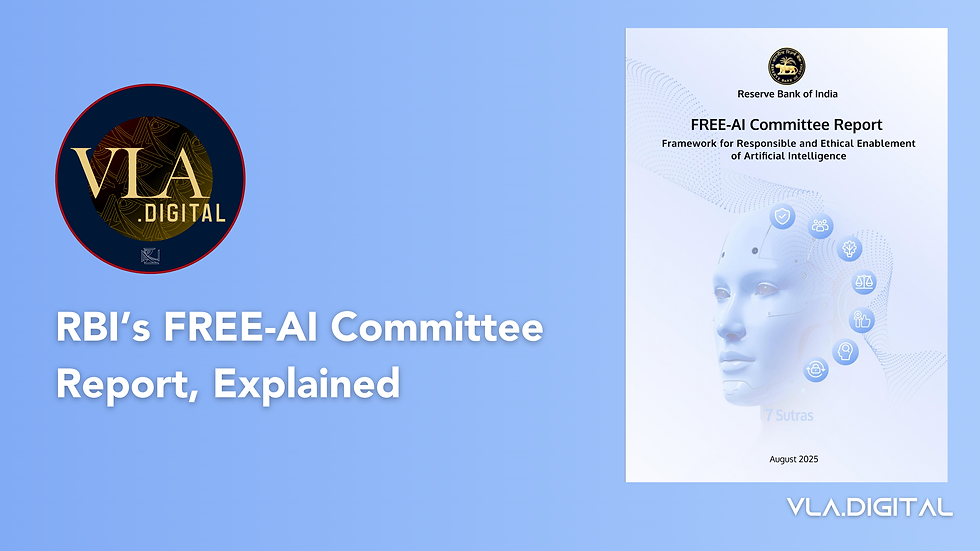The Reserve Bank of India approach to AI Governance
- Abhivardhan

- Aug 16
- 11 min read

Interestingly, the Reserve Bank of India (RBI) came up with a "FREE-AI Committee Report" demonstrating the features of a "Framework for Responsible and Ethical Enablement of Artificial Intelligence".
This insight provides a concise explainer of the key features of this report and this framework.
However, please understand. While hyped up media and think tank platforms will claim this framework to be anything like spin doctors, it's strictly necessary to understand the specific context of this framework - since RBI is an Indian central bank, and perhaps one of the most important regulators in the country. Hence, it's better to take their report on a very specific and not too broader note.


.png)


